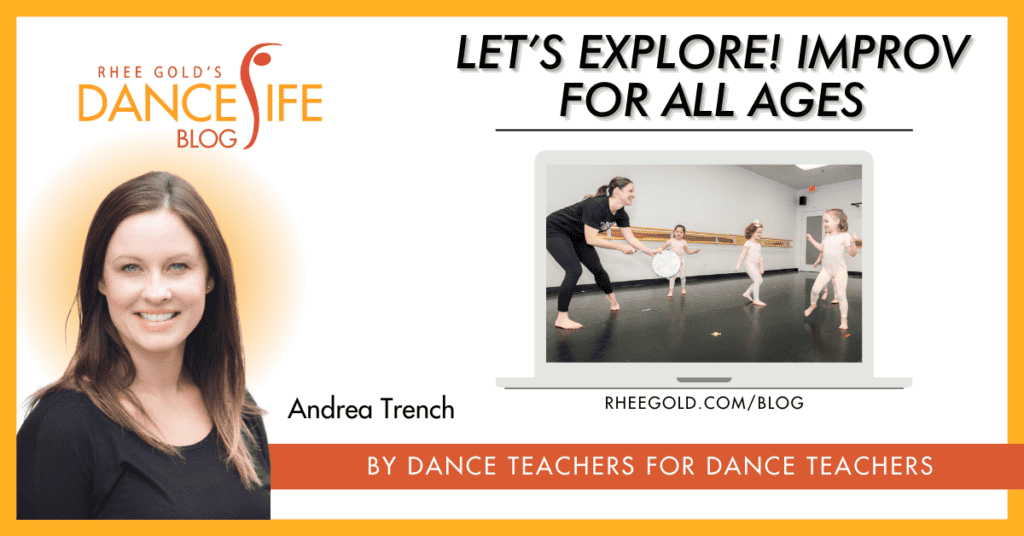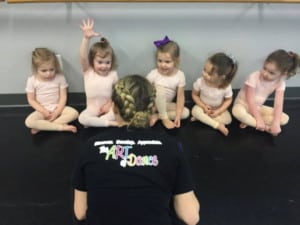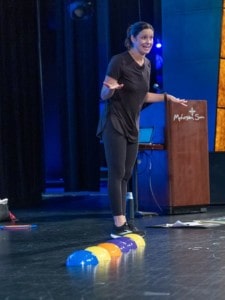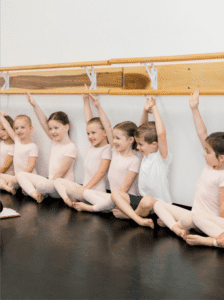Let’s Explore! Improvisation for All Ages

I am a big believer that every class we teach, no matter the age, stage of development, or style of dance, should include improvisation.
Every time we make space for improvisation in our classes, we are allowing our students to discover their own unique moving body, expand their movement vocabulary, and grow their confidence.
As a modern dancer, improvisation was embedded in my training. If improvisation wasn’t a part of your dance education journey, I can see why you may be hesitant to incorporate it into your classes. Hopefully these tips will help you put your hesitations aside so you can activate the artist inside each of your students.
What to Expect
First, let’s look at what we can expect from the different ages when it comes to improvisation.
Early Childhood
Our 8 and under dancers are going to be the most open group when it comes to improvisation. Young children naturally have less inhibition. They are not worried about what they look like or if they will be judged by others, unlike older students. This is why I highly encourage improvisation to be incorporated in every early childhood dance class. By exposing your students to improv at an early age, we are setting the foundation for movement exploration. We are including it as a natural part of their training, much like barre work, across the floor, and center combinations. By doing so, they are more likely to carry the importance of improvisation and the confidence of their moving body with them as they progress in their training.
Tweens and Teens
As students reach tween and teen levels they become more aware of themselves and others in class. Introducing improv at this age can be awkward. Students may resort to laughing as a coping mechanism. They may hold back and dance internally with eyes and head down and range of movement limited. And, you may notice your own movement vocabulary or other teachers' aesthetics, within your students' explorations, because they have not yet had the opportunity to build their own vocabulary. They will need more guidance, clear objectives for each activity (more information on this below), and time to become comfortable with moving and thinking on the spot.
Three Ways to Guide Students
Distract with Props
Props are great tools to include in improvisation explorations. Many times the focus is pulled to the prop rather than the dancer which releases pressure and allows the students to get more creative. Props could include scarves, cones, parachutes, tunnels, stools, ballet barres, exercise balls, and even toilet paper (<- my personal favorite, see activity below).
Guiding Words for Encouragement
The important thing to remember is that building confidence in improv should be our number one goal. Encouraging dancers with guiding words such as “I love how you explored fast movement during this exploration. Show me what that movement would look like in slow motion now.” If you are finding dancers doing familiar movements from class, encourage them to show you something you have never seen before. If they continue to pirouette and grand jeté, ask them to show you a pirouette on a low level or a leap with a twisted body shape. Guide them through different ways of thinking about movement.
The Importance of Reflection
Always take a moment to reflect on the exploration. It could be as simple as “if you liked moving with smooth energy, sit down. If you liked moving with sharp energy, stay standing”. For dancers ages 7+, continue the reflection by asking why they liked moving smooth or sharp. Reflection is an important aspect when developing improvisation skills. This is the opportunity where students get to express vocally what they just experienced physically. Connecting the brain and the body through reflection will enhance the learning experience on a deeper level of comprehension.
Five Explorations to Get you Started
Ages 8 and Under
Freeze Dance: This is probably the easiest exploration to incorporate into your classes. Choose a song that represents the style of dance you are teaching and allow dancers to move freely while the music plays, and freeze when it stops. Here is the DiscoverDance Spotify Freeze Dance Playlist with over 100 Freeze Dance options to choose from. Guide your dancers through this exploration by participating fully yourself, saying what you see (“I see jumping and hopping and leaping!”), and saying what you WANT to see (“Show me how you roll on a low level.”).
Travelers and The Magic Forest: With the guidance of Kate Kuper’s song Travelers and the Magic Forest, divide your class into two groups. Group one will freeze in unusual body shapes as trees in the forest. Group two will travel over, under, around, and through the trees as they move through the forest. The song will cue each group when it’s time to freeze like trees and when it’s time to travel.
Tweens and Teens
Spider Web: It’s time to TP your studio. Yep, you read that right! Pull out your ballet barres, benches, and stools, give small groups of dancers either toilet paper or crepe paper and have them create a web around the room by tying the paper to the props. Dancers then have to travel over, under, around, and through as they find creative ways to move throughout the space.
Moving Connected: Using scarves, tie a body part or parts (wrists, legs, ankles, etc) to a partner. Dancers have to find creative ways to move across the floor or through general space connected. Call out different action words to prompt their movement. For example, roll, twist, slide, spin, stretch, pull, etc.
In & Out: Divide your dancers into two groups. All dancers begin in a clump at center stage. Choose a song that represents the style of dance you are teaching. Group 1 will improv in the clump as group 2 travels out of the clump and back in. Repeat with group 1 traveling out as group 2 stays in. Assign how many counts dancers have to travel out and back in. For example, begin with 16 counts out and 16 counts in. Repeat as many times as desired, then try in 8s, 4s, 2s, and 1s!
Happy Exploring!
Andrea Trench is dedicated to helping dance teachers create and deliver content that is research-based and developmentally appropriate for children under the age of 6. Her primary focus is classroom management, conceptual teaching, and foundational movement skill development in early childhood dance education. In addition, Andrea uses her 12 years of experience as a partner in a dance studio to inspire, equip, and empower educators.









